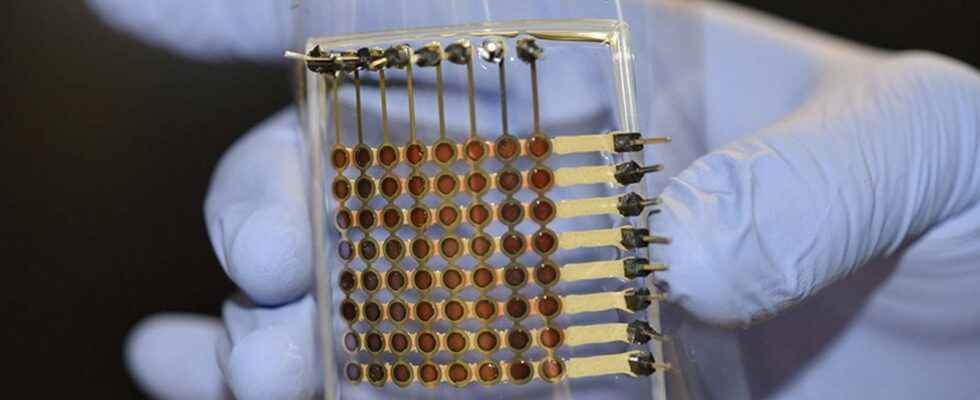In the United States, researchers at the University of Minnesota have created a flexible Oled screen, using a 3D printer.
You will also be interested
[EN VIDÉO] Build your touchscreen in minutes using a printer A team of scientists from the German University of Saarland have developed a technique that allows anyone with a printer to build a touchscreen in minutes. Here is a video illustration of this revolutionary process.
A bad fall and Oled screen of a smartphone may become unreadable and unusable. It remains to find the right part to replace this screen, which is not easy for some models and above all, sometimes very expensive. In the future, it may be possible to create a new replacement screen yourself. Researchers fromUniversity of Minnesota Twin Cities have thus developed the first screen Flexible Oled fully 3D printed.
To do this, the researchers combined two 3D printing methods to generate the six layers necessary to create a screen. Oled. We had to combine electrodes, encapsulate them, generate the insulation, the interconnections. All of these were printed by extrusion, i.e. by continuously applying matter. The active layers, on the other hand, were printed by spraying with the3D printer at room temperature.
The timelapse video of the impression of the Oled screen. © University of Minnesota Twin Cities
An overpriced 3D printer
The prototype out of the lab is a square that is only 1.5 inches wide with a density of 64 pixels. It is very little compared to a full-HD display, whose resolution is concentrated at 2 million pixels. The screen also sins a bit when it comes to brightness. But above all, to the researchers’ surprise, all the diodes are functional. Having said that, creating a custom screen at a good price is not always the case.
To create their prototype, the academics used a 3D printer that costs nearly 100,000 euros. The next steps now are to increase screen density and improve brightness, and then find ways to make 3D printing of these screens accessible. For researchers who have published their method in the journal Science Advances, be able to create such a flexible screen with 3D printer cheap is something that could happen within a few years.
Interested in what you just read?
.
fs1
